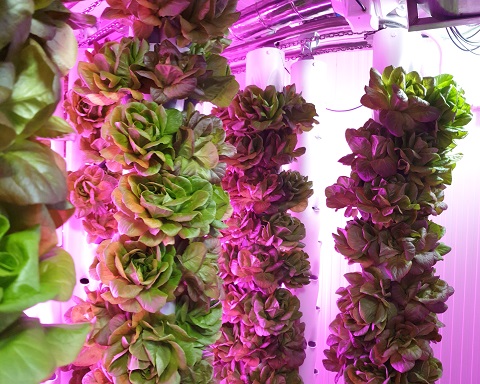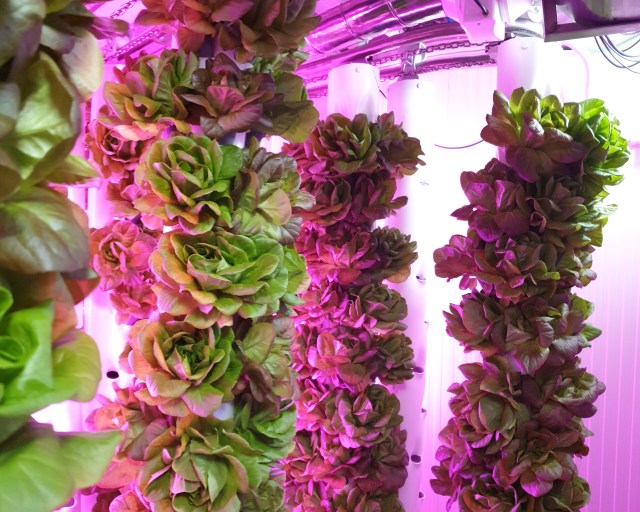- The solution, based on high-precision IoT sensorisation, automated production systems, global connectivity and cybersecurity, permits the remote control of crops and makes them more sustainable
- It incorporates the innovative Rotating High Pressure Aeroponic Irrigation (RHPA) system patented by Vertical Green to make the most of the crop areas and rule out any clogging in the irrigation nozzles
- Onubafruit has used this technology to start up a pilot project for growing strawberries and the Polytechnic University of Madrid has created an industrial doctorate financed by the CAM to analyse indoor production with this initiative
Madrid, December 15th 2020.- Telefónica and Vertical Green, an R&D company for the agricultural sector, have developed a high-tech vertical agriculture solution which is sensorised and connected to the cloud to ensure the remote control of crop harvesting.
The solution operates upon the basis of obtaining data on temperature, humidity and lighting collected by means of high-precision IoT (Internet of Things) sensors positioned in the crops. These devices are connected to central servers through data networks that are managed via Telefónica’s IoT Kite Platform. By means of algorithms these central servers analyse the best nutrient, photosynthetic radiation and irrigation measurements and the atmospheric values required for each of the crops in each of the phases of their growth. A database will help the farmers to improve production and guarantee the best crop parameters, without the need to use fertilisers and without having to constantly keep an eye on the weather.
“This project has come into being by applying technology such as machine learning to agriculture, a highly traditional sector. Together with Vertical Green we’ve developed a comprehensive solution that enables us to connect objects by means of Telefónica’s Narrow Band IoT network, while the IoT sensorisation ensures that the parameters defined by the farmers are met. What we’re trying to do is to make the production plant as automated as possible so that the farmer can control it remotely”, stated María Eugenia Bórbore, Manager of IoT and Video Solutions at Telefónica. “Digitisation can also prevent the loss of crops due to external factors such as the weather or the appearance of pathogens and improve the quality of the food and reduce the time that goes by between the harvesting of the fruit and vegetables and their subsequent consumption”.
“Industrial agriculture is one of Telefónica’s proposed areas for the generation of new businesses in 2021. The incorporation of IoT, Blockchain and AI technologies into the agricultural world for indoor crops opens up a whole new universe of possibilities for producers in the agri-food chain, many of them Telefónica’s current customers for digital transformation processes”, declared Sandra Fernández Curias, Head of New Business Acceleration in IoT & Big Data at Telefónica.
“The producers now have a tool that will enable them to relocate and de-seasonalise their production and compete in markets in which it was previously unimaginable to operate. It involves farming in controlled spaces, reducing the environmental impact and water consumption and achieving high-density sustainable production in small areas”, explained Hugo Scagnetti, CEO of Vertical Green, who provides an example of what could be achieved with this Agro 2.0 project: “We’re talking about producing the same number of vegetables in a 90 m2 space (equivalent to three containers) as we can on 10,000 m2 or a hectare of land”.
Innovation thus adapts to a paradigm shift in the agricultural sector, that of producing greater amounts with fewer resources. Smart Agro’s Vertical Green solution simplifies logistics and makes food production more sustainable, particularly in urban and interurban areas.
This new cultivation system has also included and patented an innovative and unique RHPA (Rotating High Pressure Aeroponic Irrigation) system permitting farming by means of a rotating system of aerial tubes which, by means of the regular movement of the crops, irrigates all the plants in a uniform manner, reducing the space required for irrigation devices, favouring the use of the space, increasing production by 40% and lowering water consumption by 95%. The nozzles of the irrigation system also incorporate an innovative feature that facilitates the atomisation of the water and air to prevent any blockages and reduce maintenance costs.
This solution is already being used in a pilot project by Onubafruit, one of Europe’s leading strawberry producers. This association of cooperatives is working on a crop-growing project with RHPA technology in Spain to grow strawberries in a high-density indoor space.
The academic world is also promoting this technology and the UPM (Polytechnic University of Madrid) has created a three-year industrial doctorate together with Vertical Green that’s financed by the CAM (Community of Madrid). It will conduct research into strawberry growing and examine the possibilities of “vertical” production to improve the crops in terms of quality, supply, efficiency and sustainability, thus creating new jobs with higher qualifications within the sector.
Vertical Green is one of the companies included in Telefónica’s Activation Programme that’s receiving access to Telefónica’s IoT, Blockchain and Artificial Intelligence platforms and related support. It’s also a solution accelerated by the area for new businesses, which accompanies them throughout the evolution and technical validation process to incorporate NB-IoT connectivity, achieve a “best in class” industrialised solution in the sector and plan joint marketing initiatives with Telefonica.
The joint proposal by Vertical Green and Telefónica complies with the requirements set out in the United Nations’ sustainable production programme for 2030.









